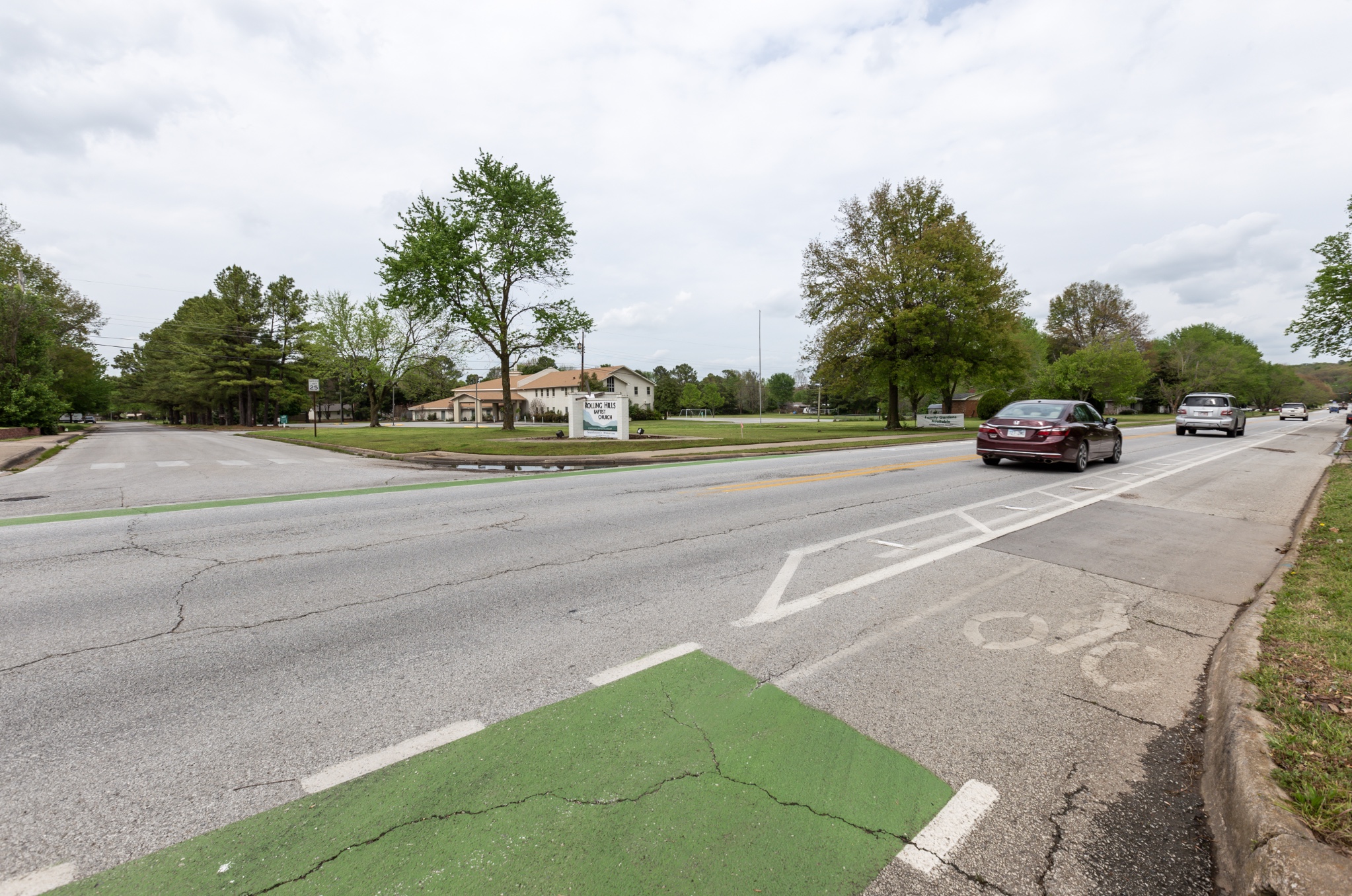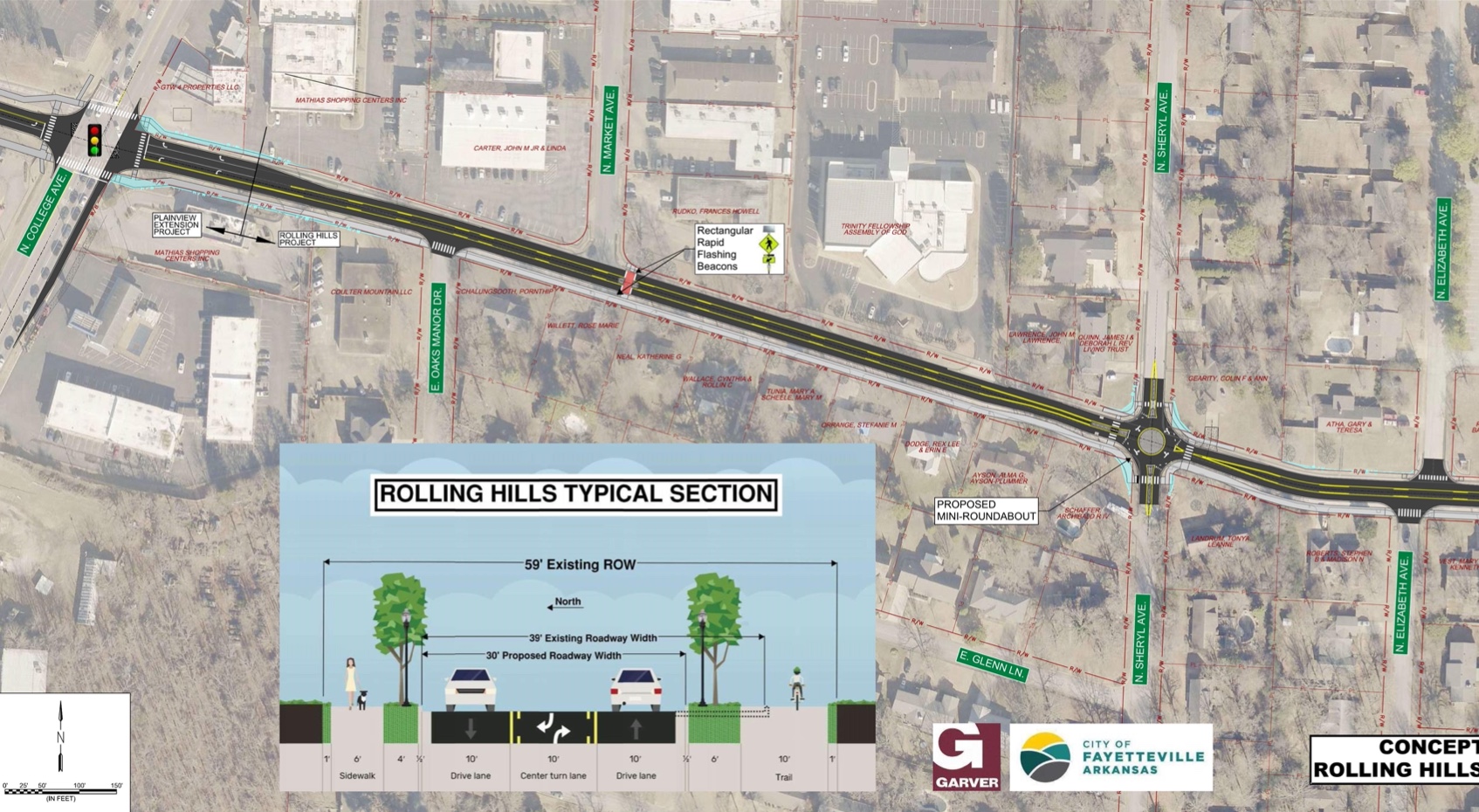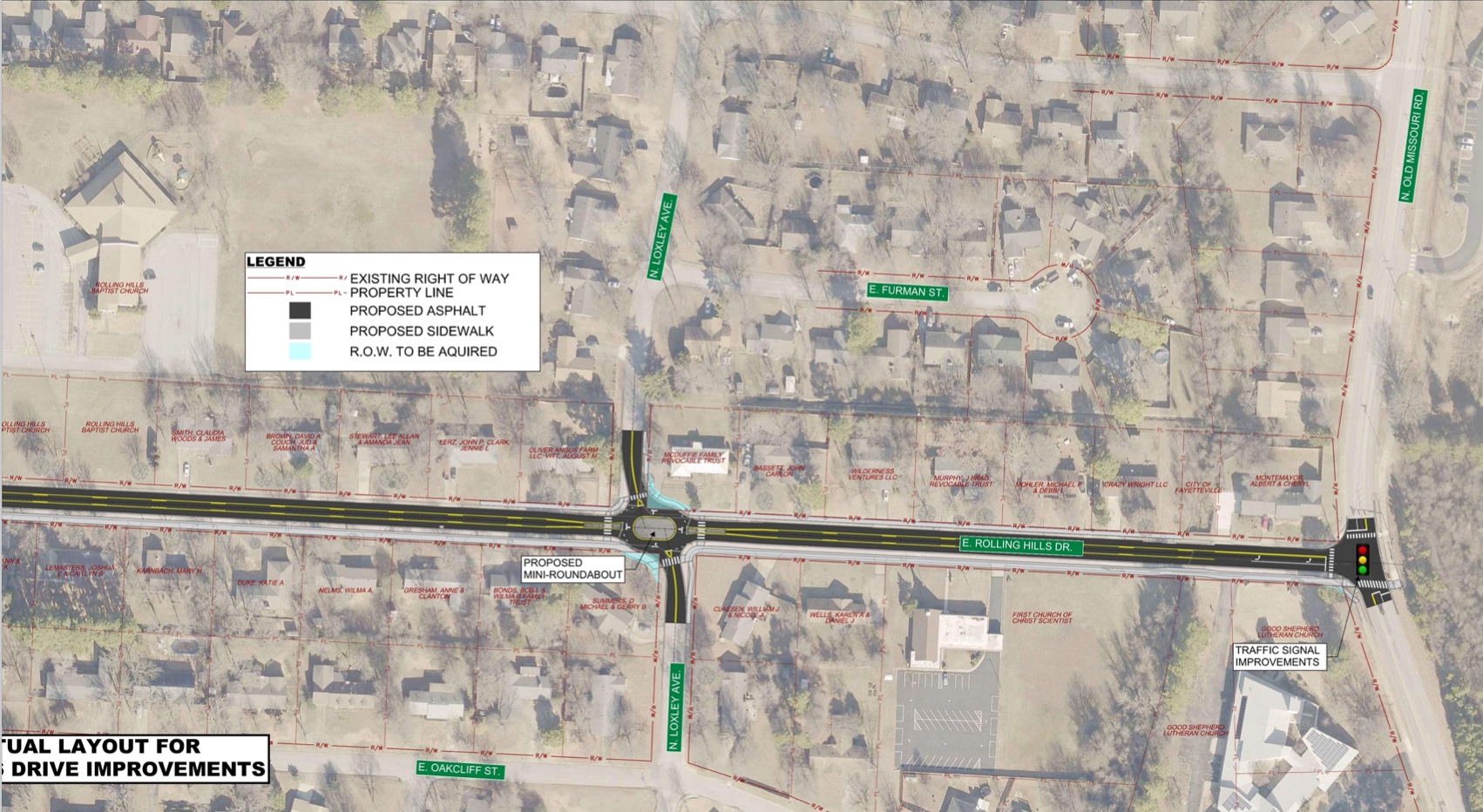
Rolling Hills Drive / Photo: Todd Gill, Fayetteville Flyer
The City Council’s Transportation Committee members this week got their first look at the conceptual design for a series of safety improvements along the Rolling Hills Drive corridor between College Avenue and Old Missouri Road.
The project is part of the transportation bond issue that voters approved in 2019. It includes a total overhaul of the road, with an emphasis on increasing safety for pedestrians and people who ride bikes through the area.
Rolling Hills Drive provides access to adjacent neighborhoods and helps connect the Razorback Greenway to Butterfield Elementary School. It’s the only flat east-west bicycle route to the greenway in the city. The road currently carries about 10,000 cars per day, according to city documents, so improving the corridor for traffic capacity and providing safe facilities for bicycles and pedestrians is a priority.
Jeff Webb from Garver Engineers presented the proposed conceptual plans to the committee on Tuesday at the group’s regular monthly meeting.
Webb said since the current roadway is so wide, designers were able to plan the project within the city’s existing right-of-way, with only a small amount of proposed acquisition at key intersections.
Cross section plans show a 10-foot-wide driving lane in each direction with a center turning lane along most of the corridor. A 10-foot bike trail is shown on the south side of the road, separated from the street by 6 feet of green space with street trees and lighting. On the north side, the existing 6-foot sidewalk and 4-foot green space would stay and would also include trees and lights.
The intersections at Sheryl and Loxley avenues would be converted into mini roundabouts to help slow traffic and provide some traffic relief at peak traffic times.
Crosswalks are also planned along the route, some that cross Rolling Hills and others that cross the side streets. A crossing near Market Avenue would include a rectangular rapid flashing beacon (RFFB) and refuge islands for when traffic is too busy near College Avenue for a safe crossing of the entire road.
Other design features include drainage improvements along the corridor and a trail re-alignment for the crossing at Old Missouri Road.
Webb said the mini roundabouts would be similar to those on the University of Arkansas campus near Bud Walton Arena in that they would only be slightly raised so as to allow large trucks, buses and emergency vehicles to drive over them when necessary.
The side roads leading to each mini roundabout would be narrowed in an effort to keep right-of-way acquisition to a minimum, and to try and save trees that would otherwise need to be removed for construction.
“We know that the residents along Rolling Hills care about their trees so we have taken that into consideration,” said Webb.
Council Member Sarah Bunch, who represents the surrounding neighborhoods in Ward 3, said she was happy to see those steps were taken.
“I really appreciate the efforts to save as many trees as possible in this neighborhood,” said Bunch.
City engineer Chris Brown said the mini roundabout at Loxley might look a little odd at first sight, but his department suggested its oval shape since the intersection is offset. A traditional round design would’ve required a larger piece of infrastructure and a considerable amount of additional right-of-way acquisition.
Brown said now that the committee has seen the plans, the next step is to take another round of public comment before the designs are finalized.
The city first asked for ideas in November 2019 during a drop-in event at Rolling Hills Baptist Church.
Input from that meeting, Brown said, helped shape the conceptual designs, including the mini roundabouts. Still, he knows they will be controversial for some.
“We do expect when we take public comment again, the vast amount of comments will be related to the mini roundabouts,” Brown said. “But it’s something the neighbors asked for related to traffic calming and better access from the side streets.”
Council Member Matthew Petty, who chairs the committee, said he’s excited about the plans.
“I like this idea and think it’s a good concept,” said Petty. “I think it will be, on the whole, really well-loved.”
After the next round of public comment, the committee will make a recommendation to the full council. If all goes according to plan, construction is set to begin sometime in 2023.




